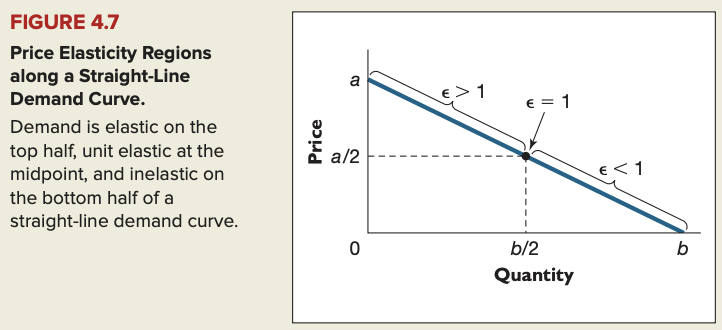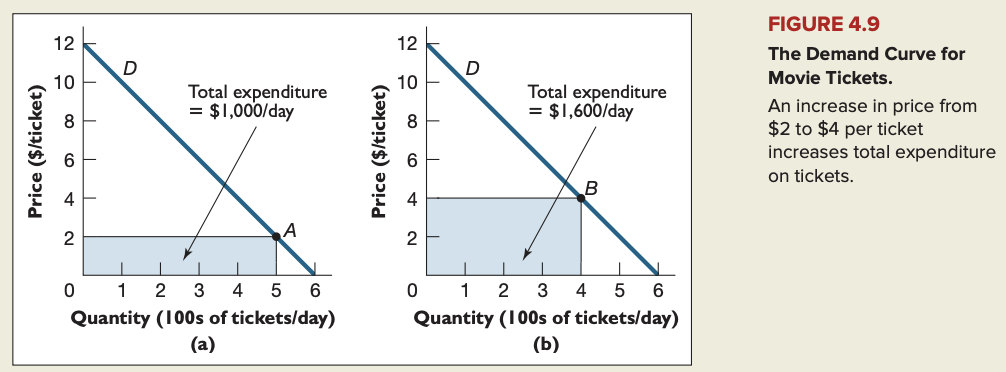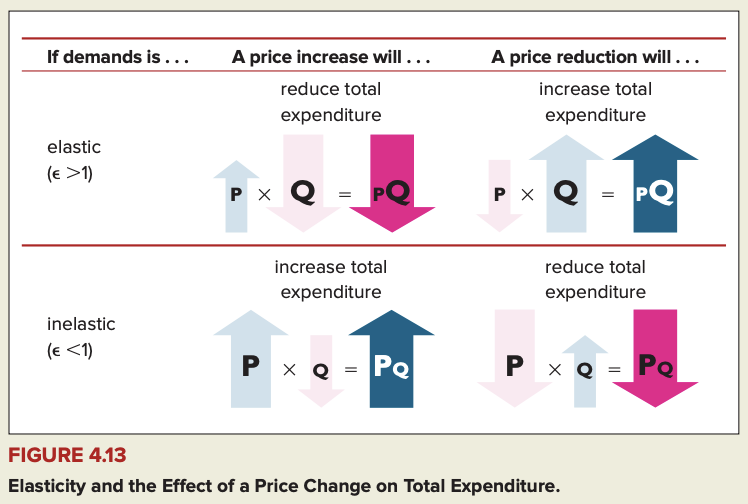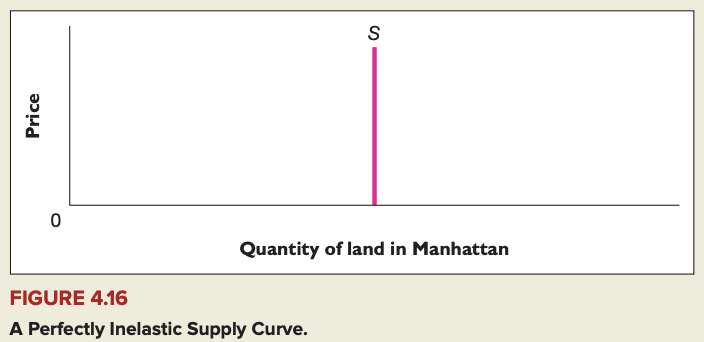
Chapter 4 - Elasticity
Price elasticity of demand
Price elasticity of demand: percentage change in the quantity demanded of a good/service that results from a 1 percent change in its price.
For example, if the price of beef falls by 1 percent and the quantity demanded rises by 2 percent, then the price elasticity of demand for beef has a value of -2.
The demand for a good is elastic with respect to price if its price elasticity of demand is greater than 1.
The demand for a good is inelastic with respect to price if its price elasticity of demand is less than 1 unit.
The demand for a good is unit elastic with respect to price if its price elasticity of demand equals 1.
A graphical interpretation of price elasticity


Perfectly elastic demand: demand is perfectly elastic with respect to price if price if elasticity of demand is infinite.
Perfectly inelastic demand: demand is perfectly inelastic with respect to price if price elasticity of demand is zero.

Elasticity and total expenditure
Total daily expenditure on a good: daily number of units bought times the price for which it sells.
Total expenditure = Total revenue: The dollar amount that consumers spend on a product (P x Q) is equal to the dollar amount that sellers receive.


Income elasticity and cross-price elasticity of demand
Cross-price elasticity of demand: percentage by which the quantity demanded of the first good changes in response to a 1 percent change in the price of the second.
Income elasticity of demand: percentage by which quantity demanded changes in response to a 1 percent change in income.
Price elasticity of supply
Price elasticity of supply: percentage change in quantity supplied that occurs in response to a 1 percent change in price.

Perfectly inelastic supply: supply is perfectly inelastic with respect to price if elasticity is zero.

Perfectly elastic supply: supply is perfectly elastic with respect to price if elasticity of supply is infinite.

Chapter 4 - Elasticity
Price elasticity of demand
Price elasticity of demand: percentage change in the quantity demanded of a good/service that results from a 1 percent change in its price.
For example, if the price of beef falls by 1 percent and the quantity demanded rises by 2 percent, then the price elasticity of demand for beef has a value of -2.
The demand for a good is elastic with respect to price if its price elasticity of demand is greater than 1.
The demand for a good is inelastic with respect to price if its price elasticity of demand is less than 1 unit.
The demand for a good is unit elastic with respect to price if its price elasticity of demand equals 1.
A graphical interpretation of price elasticity


Perfectly elastic demand: demand is perfectly elastic with respect to price if price if elasticity of demand is infinite.
Perfectly inelastic demand: demand is perfectly inelastic with respect to price if price elasticity of demand is zero.

Elasticity and total expenditure
Total daily expenditure on a good: daily number of units bought times the price for which it sells.
Total expenditure = Total revenue: The dollar amount that consumers spend on a product (P x Q) is equal to the dollar amount that sellers receive.


Income elasticity and cross-price elasticity of demand
Cross-price elasticity of demand: percentage by which the quantity demanded of the first good changes in response to a 1 percent change in the price of the second.
Income elasticity of demand: percentage by which quantity demanded changes in response to a 1 percent change in income.
Price elasticity of supply
Price elasticity of supply: percentage change in quantity supplied that occurs in response to a 1 percent change in price.

Perfectly inelastic supply: supply is perfectly inelastic with respect to price if elasticity is zero.

Perfectly elastic supply: supply is perfectly elastic with respect to price if elasticity of supply is infinite.

 Knowt
Knowt